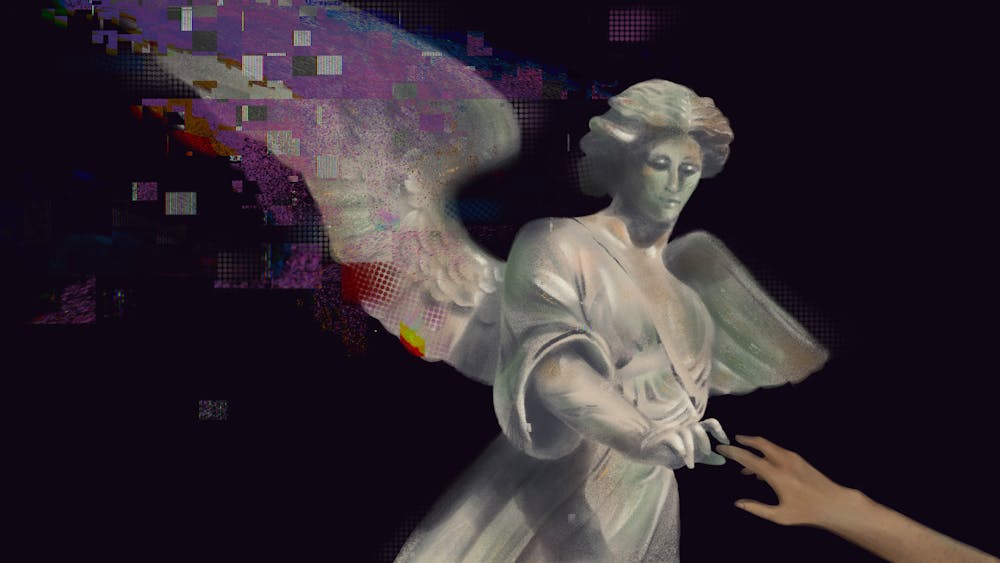Artificial intelligence—the pariah of many creatives, a signal of the end of an autonomous and engaged human race that will transform us all into the people from WALL–E. Or is it?
While many arguments have been made outlining fears associated with the rise in AI, its use for accessibility purposes is worthy of further consideration. What’s more, the boundaries of this use are being extended to the creative realm, a place that may be hesitant to legitimize it.
In “Work and Technology: Choices and Outcomes,” a class taught by professor John Paul MacDuffie in Wharton’s Management Department, a guest speaker sparked this curiosity. On an unsuspecting day in our Huntsman Hall classroom arrived Mukul Pandya, the Founder and Executive Editor of Knowledge@Wharton from 1999–2019. While my peers and I were expecting this guest speaker to discuss the impacts of automation on manufacturing or perhaps semi–autonomous vehicle legislation, we were met with a far more vulnerable and personal narrative.
Pandya told the story of the stroke he suffered just a few years ago, and the feelings of helplessness and depression that followed. He writes: “After more than 40 years as an editor and writer, I could neither write nor edit. If I could not be a writer or editor, who was I?”
Today, Pandya is in a much better place, physically, mentally, and even spiritually. Critical to this journey, interestingly enough, has been artificial intelligence. Pandya has used the technology of predictive analytics to compose messages when typing post–stroke felt impossible, and then discovered using Otter.ai’s speech–to–text feature to transcribe interviews, ultimately helping him craft articles again. Pandya’s story and that of many others present the value of finding ways that AI can complement the human experience, rather than disrupt it.
Artificial intelligence as a tool for the disabled is often an overlooked application of the glamorous, yet daunting, technology. Pandya’s case is clear, positive, and not far out of the ordinary, reflecting the generally favorable attitude toward generative AI in business–oriented circles like Wharton.
The same cannot be said for creative spaces, which have had a more mixed reaction to artificial intelligence that leans negative and disdainful with developments like the WGA and SAG Strikes and musical creations like “Heart on My Sleeve” with artificially generated vocals by Drake and The Weeknd. That said, in some capacities, the same accessibility benefits Pandya and many others have utilized can be gained when it comes to art and art–making.
Artist Cosmo Wenman, alongside a team of blind researchers, organized a project to investigate this notion, which will become a curated exhibition in the near future. Using Midjourney, the team generated 4,110 images from text prompts, ranging from attempts to replicate Leonardo da Vinci’s Last Supper to pictures inspired by Rodin’s sculptural style, which the blind artist who wrote the text prompt had previously touched. Results were fascinating and not always what Wenman, as the only seeing researcher, anticipated. In fact, Wenman observes that the artificial intelligence program is capable of formulating “weird and thematic intersections” that the human eye may not be able to capture.

The technology, while holding creative promise, is not yet impeccable, like most artificial intelligence tools at this stage. Midjourney is tinkering with its algorithm in the hopes of improving precision and control. It is also trying to create a back–and–forth system like OpenAI’s ChatGPT so that the platform continues to be accessible and interactive at all points, allowing blind users to understand and confirm their end results.
It is the lack of command perfection, however, that Wenman believes contributes to the visual intrigue of the artwork—there is beauty in this chance, uniqueness, and chaos.
“I think it’s [generative AI] important technology,” Wenman said in an interview with Artnet News. “I think the larger scale accessibility question, being able to integrate the thematic elemental make–up of a work, is really extraordinary. It’s essentially moveable type for visual rhetoric. That has never happened before.”
So, before waxing poetic about how artificial intelligence will crush human creativity, or that robots will take over our lives, consider the following: in the realm of art, AI has the potential to bring the ability to create new communities, democratizing self–expression in a way that must be recognized.







